Content |
|---|
History
The “West Siberian Laika” (Zapadno-Sibirskaïa Laïka), is the product of crossbreeding between the closely related species of Laïka de Chanteisk and Mansijak with Russian hunting dogs from the north of the Urals and Western Siberia. Outside its area of origin in areas mainly populated by hunters, This race has widely spread to central areas of Russia; This type of dog that abounds on these sites, they are reared in large installations. In different hunting regions there are special kennels for raising the West Siberian Laika.
Since 1980 the Russo-European Laika just like him East Siberian Laika have been recognized as independent breeds by the FCI in addition to the West Siberian Laika. But, the Yakutian Laika, as well as other types of Laïka, as the Jezdoraja Laika, the Nenezker Weather or the Karelo-Finnish Laika, are not internationally recognized until now. Within the FCI the three breeds of Laïka are classified in the group 5, Together with the Gray Norwegian Elkhound and the Karelian Bear Dog, form the Section 2 “Nordic Hunting Dogs” within this group.
Physical characteristics
It is a hunting dog of variable utility, but also shooting or for sledge. Is medium-sized, Slim and strong Constitution. Her bone structure is well developed, is not mass or rough. Muscle is strong and well developed. It has a strongly coiled tail, He takes her on the back or the back.
Its fur is hard, short, with developed internal fluff. The outer layer is thick and straight. The internal fluff is abundant and dense hair's outer layer which gives a distant and leafy appearance. In the head, You ears and part of limb hair is short. On the cross, neck and back of legs the hair is longer than forming a collar in the region of the neck and a beard in the cheek area; the rear extremities presents some feathers.
Is white, salt and pepper, Red or gray in all colors. Allow the color black, also spotted or with the same color plates.
Strong similarity to the wolf
With the often hairier males, it even produces a kind of mane. This feature is reminiscent of a wolf, with which the Laïka not only share the pointed and high ears, narrow wedge-shaped head and small oblique eyes, but also strong teeth and coat color, often similar to wolf.
Assorted coat colors and a typical striped tail
But, the colors of him West Siberian laika they are very diverse according to the wide area of distribution of the breed and the large number of local traits, ranging from pure white to black, pepper and salt, the color of the wolf, reddish brown, grey, the pied or the spotted. characteristic of all races Russian Laika is the striking striped tail, worn both on the side and on the back.
Character and skills
Independent hunter and close ally.
Like most hunting dogs, the West Siberian Laika also has some independence. Not only in hunting, but also as a watchdog, companion dog or sled dog, sometimes acts independently and autonomously. But, this does not mean that it cannot adapt to its humans. On the contrary: the Laïka feels closely connected to her reference person and always seeks their proximity. Even when hunting, never strays too far from his guide and makes sure each 20 or 30 minutes of hunter following.
The intense relationship with humans allows him Laïka – despite its original roots – be used as a herding dog, protection, guard or shooting.
Life in the family
Once an owner has earned the trust of his Laïka, even the most demanding training goals can be achieved. It is important that the West Siberian Laika have a firm place in your “in the sense” from the beginning and allow him to participate closely in the life of his people. In doing so, is closely linked to your “leader of the pack”, but also shows himself as a patient and loving companion when dealing with other family members, especially with the children. If you socialize early and comprehensively, living with other dogs and pets usually works without problems.
Activities “West Siberian Laika”
Despite these characteristics, the West Siberian Laika is and remains primarily a working dog, for which his “work” is as important as its people. A life as a pure domestic and family dog ​​certainly does not do justice to its nature.. Only if you can sufficiently demonstrate your stamina, agility, speed and intelligence, will present himself at home as a calm and balanced companion.
The West Siberian Laika I want to be “needy” and, therefore, you should definitely be given a task that challenges you both physically and mentally. Owners who don't run their Laïka like the hunter he is, they must provide for sufficient substitute employment, for example, in sport form (Agility), training dog sport, runway and nose work or training as a rescue dog.
Health “West Siberian Laika”
Unlike many other dog breeds, which often developed rather by coincidence, Russian dogs already had very early exact ideas about the useful characteristics of this breed. The baby of him West Siberian Laika was soon put under strict controls and took place in central state approved breeding stations. In order to preserve the excellent qualities of hunting, officially organized tests were introduced. Dogs that did not meet the high usage requirements were systematically excluded from breeding..
Healthy and robust working dogs
Strict breeding requirements and tough selection led to the good hunting dog qualities and excellent sensory perceptions of dogs being preserved to this day. At the same time, high concentration on utility ensured that outward appearances became less of an affair. A breeding of pure beauty, that as the examples of other dog breeds show, often led to health problems, was avoided in the West Siberian Laika. Hereditary diseases typical of the breed, with which fashionable dogs often fight, are not known in this original breed. Even generalized joint diseases, such as dysplasia of the hip joint (HD), rarely occur in this Laïka.
Nutrition “West Siberian Laika”
Dog owners shouldn't change their diet too often either.. Although the West Siberian Laika is not very picky about his diet, the constant changes in the food plate could overload even his robust stomach. As a descendant of the wolf, dogs don't need many different foods to stay healthy. Unlike us humans, that we should have a diet as varied as possible and whose menu includes meat, fish and vegetables, as well as potatoes, noodles and other cereal products, dogs need meat above all. Both their teeth and their digestion are oriented to the processing of foods based on meat. Different types of meat and changing tastes are, by the way, desirable with respect to this main ingredient.
Discover our selection of dog food.
Pay attention to your dog's nutritional needs. Whether you feed your dog moist meat, dry, raw (BARF) or cooked, it is important that the quantity and content of the food meets the specific nutritional needs of your dog. These requirements depend on very individual criteria such as race, size, age, activity level and health status and may vary accordingly. If the composition is correct, a Laïka adult can get by on one or two meals a day. after feeding, the feeding bowl should be cleaned and should only be available again the next day or for the next meal. It is better to avoid snacking between meals or the constant administration of treats. But, fresh drinking water should always be available for your dog.
Buying a West Siberian Laika
With his healthy nature, robust and original, the West Siberian Laika satisfies the desire of many dog ​​lovers for something “Wild” in our modern and civilized everyday life. And finally, but not less important, the wolf appearance of this breed fascinates people. This natural beauty, coupled with excellent hunting performance, made of him West Siberian laika one of the most popular dog breeds of the former Soviet Union already in 1960.
how much does a puppy cost “West Siberian Laika”?
In Europe, the Time to fall still rarely seen. So it is extremely difficult outside of Russia to get a purebred Laika from a proven breeding line.. Long, arduous roads and a comparatively high puppy price between 1.300 and 1.500 EUR are the rule. Even if you have found a suitable breeder after a long search, you may be advised not to buy a Laïka. Don't be surprised if during the first meeting you are asked very personal questions about your profession., their living conditions, your future plans and marital status. For committed and serious breeders, the welfare of dogs is, as a last resort, more important than financial benefit. After all, keeping such a demanding animal takes a long time, experience and space.
People who are mainly attracted by the appearance and originality of this Laïka they must therefore carefully consider whether their living conditions and character really fit this breed. If in the end you are still convinced that the West Siberian Laika is the correct breed, you must prepare well for the purchase of the new “family member”. Not only are you doing yourself a favor, but above all the dog, because this Laïka demands your undivided attention “handler” and does not tolerate a change of owner very well.
care for him “West Siberian Laika”
Although the West Siberian Laika he is a very robust dog, you need not only a healthy diet but also proper care to stay healthy and vital. Its hard and soft top layer repels dirt and water well, but you still need to brush regularly (about twice a week). During the change of coat, you Laïka should be brushed daily to remove dead hair and strands. In general, owners of this dog breed should not be bothered by dog hair in the house, because although the West Siberian Laika he is basically a very clean dog, lose a lot of hair, that spreads across the sofa, the carpet and the floor. In addition to the toilet, the claws should be regularly shortened and the ears, teeth and feet should be checked and cleaned.
Keeping
Regarding the attention, the time required can be manageable, but the use of a Laïka alone takes a lot of time (free). Who chooses a West Siberian Laika should therefore not have to work full time. This human-oriented working dog is not cut out for long periods of solitude. As an original hunting dog needs a lot of career, an appropriate task and lots of contact with your reference person. A hatchery in a small town flat is, therefore, as unsuitable as a kennel. The Siberian breed dog feels more comfortable in a house with a large fenced garden, where you can be close to your humans at all times.
No dog for beginners
Also for the education of this Laïka a close relationship between dog and human is a basic requirement. If your dog trusts you, can rely on its competence and sovereignty as “leader of the pack” and is sure of his closeness and love, will follow you willingly – despite its original roots as an independent hunting dog. But in order to reliably fulfill the role of a competent leader of the pack, technical knowledge is required, consistency and strength of character. The West Siberian Laika certainly not a beginner dog.
Characteristics "West Siberian Laika"
Coexistence is important that you have with your new friend. Before considering the acquisition of a dog of the breed "West Siberian Laika" you know certain factors. Not all breeds of dogs are apt to live in an apartment, you must take into account his character, their need for exercise, their interaction with other pets, their care and if you have small children, their level of tolerance towards them.
Adaptation ⓘ2.0 out of 5 stars (based on 1 review)
|
friendly dog ⓘ3.0 out of 5 stars (based on 1 review)
|
hair loss ⓘ5.0 out of 5 stars (based on 1 review)
|
|---|---|---|
Affection level ⓘ4.0 out of 5 stars (based on 1 review)
|
Need for exercise ⓘ5.0 out of 5 stars (based on 1 review)
|
Social need ⓘ4.0 out of 5 stars (based on 1 review)
|
Home ⓘ5.0 out of 5 stars (based on 1 review)
|
Toilet ⓘ3.0 out of 5 stars (based on 1 review)
|
Friendly with strangers ⓘ3.0 out of 5 stars (based on 1 review)
|
barking ⓘ5.0 out of 5 stars (based on 1 review)
|
Health ⓘ2.0 out of 5 stars (based on 1 review)
|
Territorial ⓘ4.0 out of 5 stars (based on 1 review)
|
Cat friendly ⓘ3.0 out of 5 stars (based on 1 review)
|
Intelligence ⓘ3.0 out of 5 stars (based on 1 review)
|
Versatility ⓘ4.0 out of 5 stars (based on 1 review)
|
Child friendly ⓘ3.0 out of 5 stars (based on 1 review)
|
Surveillance ⓘ4.0 out of 5 stars (based on 1 review)
|
joy ⓘ4.0 out of 5 stars (based on 1 review)
|
Images "West Siberian Laika"
Photos:
1 – “West Siberian Laika” by https://commons.wikimedia.org/wiki/File:West_Siberian_Laika.jpg
2 – “West Siberian Laika” by ecured
3 – Riga, Baltic Winner -2013, 9-10 Nov by Thomas / CC BY-SA
4 – Riga, Baltic Winner -2013, 9-10 Nov by Thomas / CC BY-SA
5 – First-generation (F1) wolf-dog hybrid from Wildlife Park Kadzidlowo, Poland (photos: A. Krzywinski) by Maris Hindrikson et al / CC BY
6 – This is a 4 month old West Siberian Laika female pup. It is at this stage when a WSL pups unique natural hunting instincts become evident by Meribelles at English Wikipedia / CC BY-SA
Videos "West Siberian Laika"
Type and recognitions:
- FCI CLASSIFICATION: 306
- Group 5: Spitz and primitive types
- Section 2: Nordic Hunting Dogs. With proof of work..
Federations:
- – FCI – Group 5 – Section 2 Nordic Hunting Dogs. ⓘ
FCI breed standard "West Siberian Laika"
Alternative names:
1. WSL, Zapadno-Sibirskaïa Laïka (English).
2. Zapadno-Sibirskaïa Laïka (French).
3. Zapadno-Sibirskaïa Laïka (German).
4. Zapadno-Sibirskaïa Laïka (Portuguese).
5. Zapadno-Sibirskaïa Laïka (español).
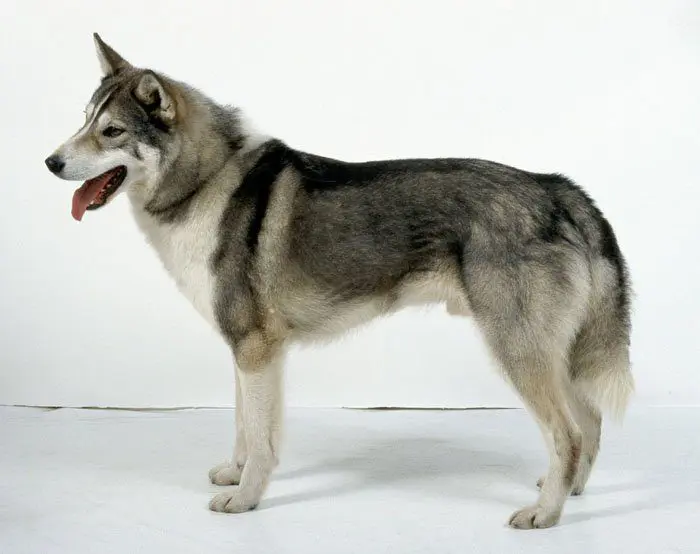
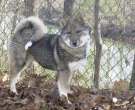
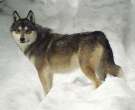
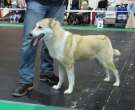
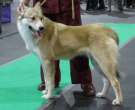
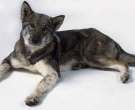
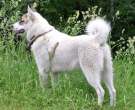
 West Siberian Laika (English subtitles)Wild boar hunting in Spain
West Siberian Laika (English subtitles)Wild boar hunting in Spain West Siberian Laika / 99+1 Dog Breeds
West Siberian Laika / 99+1 Dog Breeds WEST SIBERIAN LAIKA: ULTIMATE SMALL GAME HUNTER
WEST SIBERIAN LAIKA: ULTIMATE SMALL GAME HUNTER Laïka (video not complete ) West Siberian laika .
Laïka (video not complete ) West Siberian laika .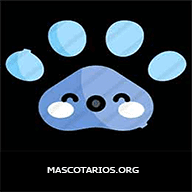
for sale: puppies from the best for hunting laikas more information to the 616290094
I have sold laika puppies. more information to phone 616290094